Need advice for new bermuda sod
jtpeltonmd
8 years ago
Featured Answer
Sort by:Oldest
Comments (12)
reeljake
8 years agoRelated Discussions
New sod...Bermuda...several questions
Comments (16)Well I am a sod farmer along the Red River on the TX side so take that for what it is worth. 1. How long should I wait before I mow it the first time? You shouldnÂt wait any longer, it is past time. I am certain you have Tifway-I aka 419 Bermuda. Tifway is best maintained between ½ to 1 inch in height. If you have a rotary type mower lower it all the way down which should be around 1 to 1-1/2 inches depending on the brand. Tifway is best maintained with a reel type that can go down to ½ inch. The other thing to remember is Tifway (all Bermuda grass is an aggressive grower and requires to be cut every few days 2. I have read that when I mow it, I should keep the level high. Is this true? No, where ever you heard that from is clueless! 3. I purchased a bag of Vigro fertilizer for new grass. Should I apply it before or after I mow the lawn? Well what does the bag ratio say? Something like 10-0-5 or what? Regardless it was the wrong type. Your very first application in the spring when the grass is about 50% green should be a ratio of 3-1-2 (15-5-10) or 4-1-2 (20-5-10). Then every 30 to 45 days should use a straight nitrogen product like 39-0-0. Lesco is in you area and has every one of these ratios in a slow release urea formulation. Lou was right about what to use, but I think the price is much lower in the neighborhood of $22 to $27 for a 50 pound bag. Box stores like Home Depot also carry Lesco in limited formulations You can use what you have for the first application and the trick is to apply 1-pound of nitrogen for every 1000 square feet. To figure that out take the first number in the ratio and divide it into 100. So for example if the ratio on the bag says 10-0-10, 100/10=10. So you would apply 10-pounds of product to every 1000/ft2 4. There are several weeds growing. Is it ok to use Weed-Be-Gone? Wait till the weather is warmed up good and the grass is actively growing before using and post-emergence. FWIW if you properly mow, water, and fertilize the weeds will disappear on there own as Bermuda will choke most any thing out....See MoreNew Bermuda Sod
Comments (1)1. If the sod came from a reputable sod farm it was fertilized when cut. So you do not have to fertilize again for at least a few weeks after is has been mowed a few times. For the first fertilizer application use a balanced type with a ratio of 3-1-2 or 4-1-2 using a slow release urea at a rate of 1 pound of nitrogen per 1000/ft2. For example if you buy 15-5-10 you would apply 6.5 lbs of product per 1000/ft2, for a 20-1-10 5 pounds of product. 2. Most likely no damage at all if the sod just went dormant to protect itself. I would make your installation contractor aware you know and if the sod does not recover you will be taking action for damages. There is almost no way to over water newly laid sod. Other than to submerge it or leave it sopping wet over night after night. For now just keep it moist during the day so the leaf surface has a chance to dry out to avoid fungus and mold problems....See Morenew bermuda sod help
Comments (10)Lilman I looked over your photos, not uncommon what you are experiencing, not is it as bad as you think. What you see is somewhat normal. The tan or dormant grass is drought dormancy, meaning the grass has gone dormant to protect itself from being too dry. It is too dry because it has no roots to speak of to pull water up from the sub soil, and because you have not been keeping it watered enough for the local conditions. If it has been rather warm and windy will suk the moisture right out of the sod even though you have been watering lightly twice a day. Up the water as it is almost impossible to over water new Bermuda sod. You may have to water lightly 4 to 6 times a day. What I suggest is give it a good thorough soaking asap so as to make the ground a bit on the soggy side, then water enough each day to keep the sod good and moist without any standing water. Then when it greens up apply a good balanced fertilizer like 15-10-5 or even some ole fashion 10-20-10 to accelerate root development and start weening off the water. Just be patient and it will be nice thick and green in a couple short weeks. As long as the grass is tan or straw colored you still have live grass. Black or grey is dead....See Morenew Bermuda sod crappy builder!!
Comments (9)I'd be afraid that 25 minutes was too long. Next time put out some tuna or cat food cans and see how full they get after 25 minutes. If they are more than 1/4 full, I'd say that's too much. Normally we tell people 5-15 minutes, 3x per day for 2 weeks. Bermuda; however, is as resilient as they come. It will easily fill in this summer even if you only have a little bit of it alive. Whatever you do don't get concerned that it is falling behind and try to fix it with bermuda seed. There is no seed that matches TIF 419. That is a hybrid. If you seed into TIF it will look weedy from now on. Once the grass is knit down to the soil (try lifting a corner here and there) you can start to back off on the frequency. Ultimately you are shooting to water 1 full inch (cat food can full) per week, but you apply it all at one time. So for example my sprinkler is an oscillator and it takes 8 full hours to fill the cans. If it ever stops raining on our drought, then I will give it 3 weeks to dry out and start watering 8 hours once every week or two. Your sprinkler system will be different. My concern would be that your system could be a high flow and apply an inch in 25 minutes. You need to test your own....See Morejtpeltonmd
8 years agojtpeltonmd
8 years agojtpeltonmd
8 years agoreeljake
8 years agodchall_san_antonio
8 years agojtpeltonmd
8 years agoreeljake
8 years agojtpeltonmd
8 years agoAdam Bray
8 years ago
Related Stories
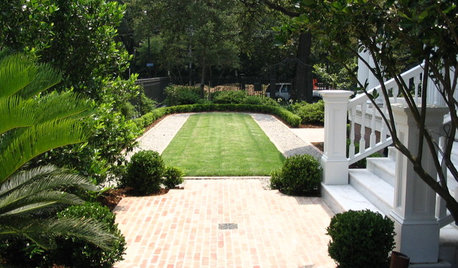
GARDENING GUIDESHow to Plant a New Lawn From Sod
Take the quick-start route to turf with sod; these installation guidelines will help ensure a healthy and long-lasting lawn
Full Story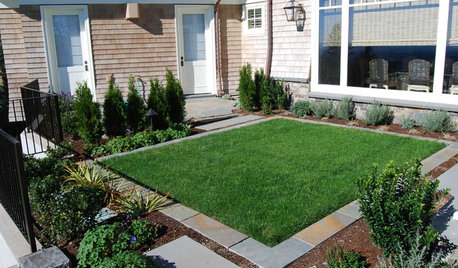
GARDENING GUIDESHow to Prep Your Ground for a Healthy New Lawn
Seed or sod that falls on weedy, lumpy soil is a wasted effort. Follow these steps to ensure that your new lawn will thrive
Full Story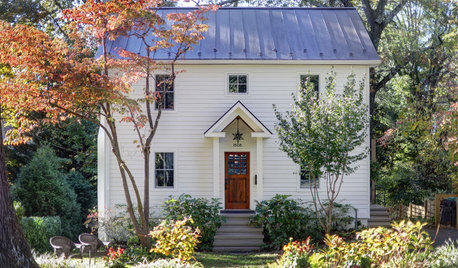
FALL GARDENINGMake This Fall’s Garden the Best Ever
Learn the most important tip for preventing buyer’s remorse, plus get more valuable buying and planting advice
Full Story
EXTERIORS5 Pro Tips for the Best Home Exterior Updates
Knock your block's socks off with this professional advice to give your home's exterior a striking new look on any budget
Full Story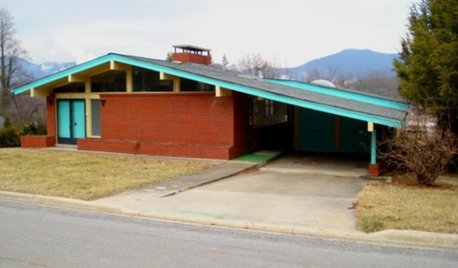
REMODELING GUIDESHouzzers to the Rescue: Users Solve Design Dilemmas
The proof is in the painting — and the pond. As Houzz users hit 100,000 discussions, see some of the results of their advice and ideas
Full Story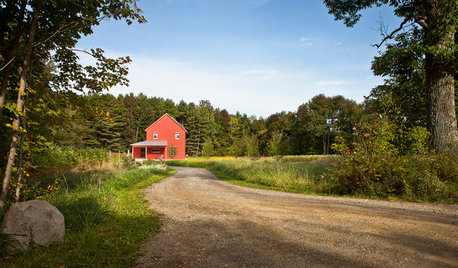
THE ART OF ARCHITECTUREFinding the Perfect Home for a New House
Sun, soil, water, topography and more offer important cues to siting your house on the land
Full Story
COLOR8 Daring Paint Palettes for Fearless Color Lovers
Dial up the volume on your home's color by nixing the neutrals and mixing in bold, beautiful colors that speak to your soul
Full Story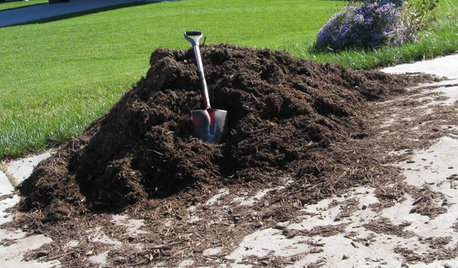
FRONT YARD IDEASBefore and After: Front Lawn to Prairie Garden
How they did it: Homeowners create a plan, stick to it and keep the neighbors (and wildlife) in mind
Full Story
GREAT HOME PROJECTSHow to Replace Your Lawn With a Garden
New project for a new year: Lose the turfgrass for energy savings, wildlife friendliness and lower maintenance
Full Story
LANDSCAPE DESIGNIs It Time to Consider Fake Grass?
With more realistic-looking options than ever, synthetic turf can be a boon. Find the benefits and an installation how-to here
Full Story


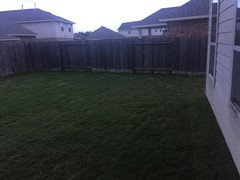

dchall_san_antonio